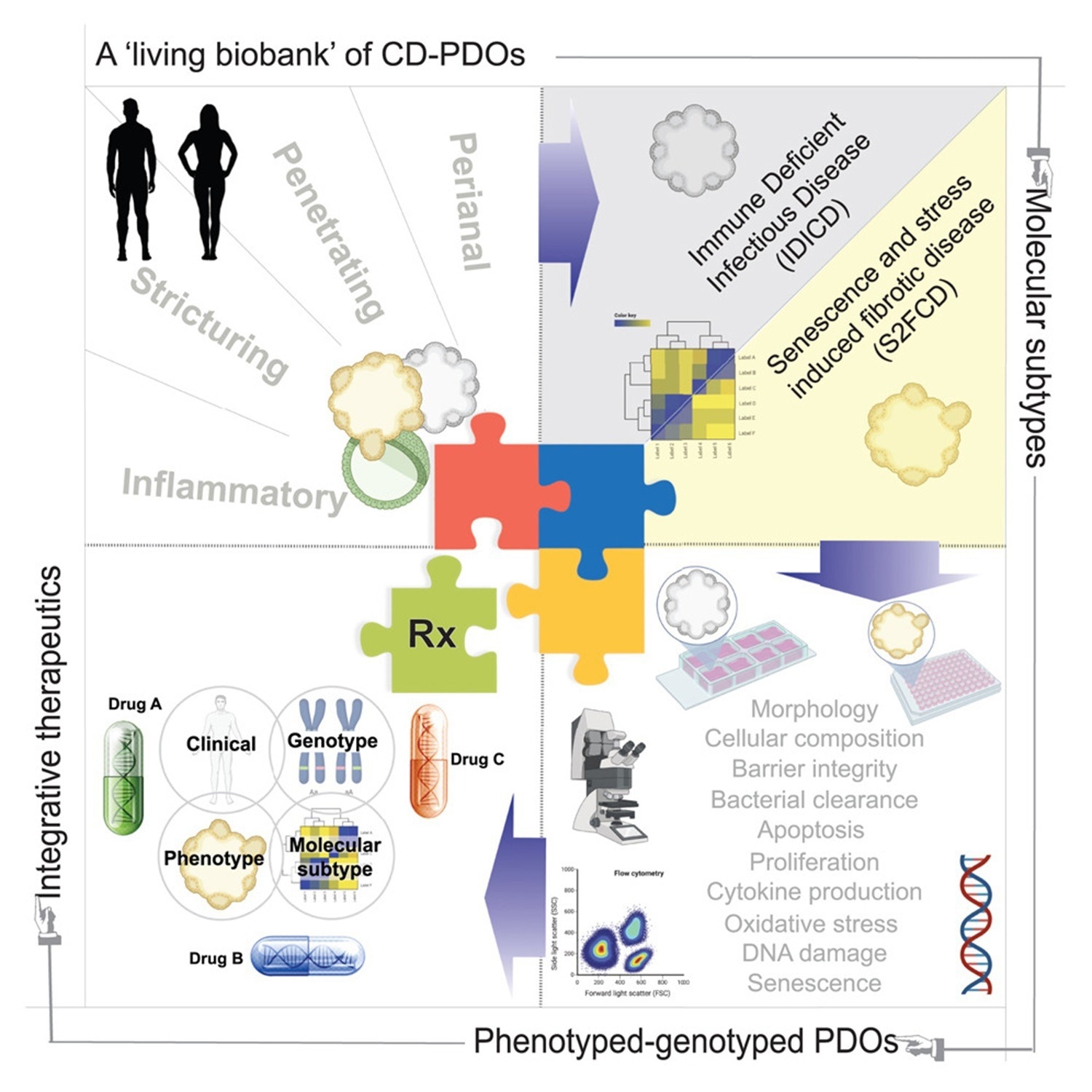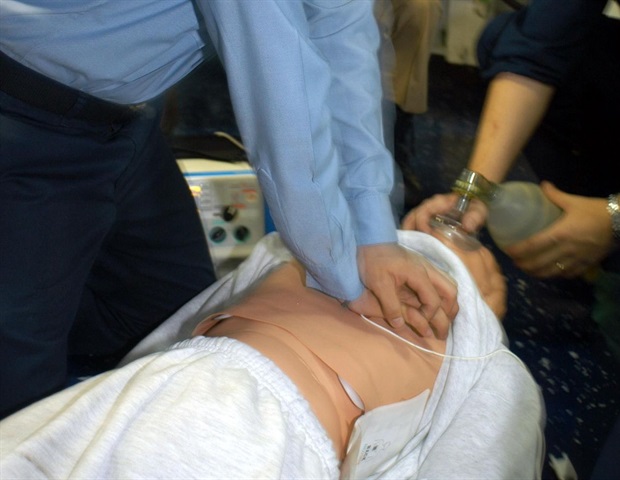By developing lab-grown intestines, researchers identified two unique molecular subtypes of Crohn’s disease, providing critical insights for personalized therapeutic approaches to treat the condition more effectively.
 Study: A living organoid biobank of patients with Crohn’s disease reveals molecular subtypes for personalized therapeutics.
Study: A living organoid biobank of patients with Crohn’s disease reveals molecular subtypes for personalized therapeutics.
In a recent study published in the journal Cell Reports Medicine, researchers created small, laboratory-grown intestines, called organoids, from tissue samples of patients with Crohn’s Disease (CD) to characterize their phenotypic and genotypic features.
Crohn’s disease (CD) is a long-lasting digestive illness with varying symptoms among different individuals. Inflammation drives pathologic changes in CD, which is multifactorial in origin. There is currently no perfect way to study CD before testing on humans, and there is no cure. A significant challenge is the lack of a reliable preclinical model that replicates human disease complexity, and efforts at the successful development of CD therapeutics have stumbled since factors that influence CD heterogeneity and evolution are unclear.
About the study
In the present study, researchers developed patient-derived organoids (PDOs) and analyzed them at a molecular level to identify pathways underlying Crohn’s disease pathophysiology and develop effective therapeutics.
The UC San Diego Inflammatory Bowel Disease (IBD) Center study included 34 CD patients, ten individuals with ulcerative colitis (UC), and nine healthy controls. CD patients had clinically confirmed disease indicated for endoscopy. Among CD patients, the age range was 20 to 74 years; 52% were male, 74% were Caucasian, 64% provided colonic or ileocolonic samples, and 23% were biologically naive. Using the Montreal classification, the team classified CD into the B1 (35%), B2 (39%), B3 (26%), and perianal (10%) subtypes.
Researchers used adult stem cells from CD patients to develop organoids. They biopsied the colon to obtain tissue specimens grown into organoids. This collection of organoids is a biobank that serves as a resource for studying the disease. Researchers analyzed organoid clinical characteristics, phenotyped them through multiomic approaches, including transcriptome and genome analysis, and performed model vs. CD tissue matching by computationally validating the organoids against patient datasets and assessing organoid response to various drugs.
The team performed high-throughput techniques, including single-cell and RNA sequencing analysis of 154,000 genetic variants associated with CD or IBD. In the phenotype analysis, light and quantitative fluorescence microscopy assessed cell morphology. Immunofluorescence and the trans-epithelial electrical resistance (TEER) in enteroid-derived monolayers (EDMs) measured by transmission electron microscopy (TEM) assessed barrier integrity. Confocal imaging estimated the ratio of Paneth:Goblet cells. Flow cytometry and enzyme-linked immunosorbent assays (ELISA) indicated genotoxic stress. Bromodeoxyuridine and Ki67 expression indicated cell proliferation. TUNEL assays assessed apoptosis. Senescence-associated β-galactosidase (SA-βGal) assays measured senescence.
Results
The organoids mimicked the actual disease conditions in the intestines of CD patients. The team identified two types of CD in the organoids: immune-deficient infectious type (IDICD) and stress and senescence-induced fibrostenotic type (S2FCD). IDICD is characterized by impaired immune activity against bacteria, while S2FCD exhibits signs of oxidative stress and cellular aging, leading to the thickening and narrowing of the intestines.
Organoids from penetrating (P, B3) CD and the perianal disease belonged to the IDICD cluster. A key upregulation was found in the polymeric immunoglobulin receptor gene (PIGR), known to increase the risk of inflammatory bowel disease. The IDICD type showed impaired microbial clearance, inadequate cytokine response, paneth cell defects, and higher cell proliferation and turnover. The subtype frequently harbored the nucleotide-binding oligomerization domain containing 2 (NOD2) and autophagy-related 16-like 1 (ATG16L1) alleles that increase CD risk.
Genotoxic stress, oxidative damage, and profibrotic changes characterized the S2FCD subtype. This type showed Yes-associated protein-interleukin-18 (YAP1-IL-18) mutations linked to inflammation. S2FCD organoids also exhibited severe structural defects, such as dysmorphic growth patterns and disrupted epithelial junctions, which may contribute to impaired intestinal function.
Pacritinib (PAC), which inhibits Janus kinase (JAK), reversed senescence. Metformin, a known anti-senescence drug, was used as a control in these experiments. PAR5359, a potent PPARα/γ agonist, reversed the impaired bacterial clearance in CD-EDMs. The probiotic E. coli Nissle 1917 and postbiotic Hylak Forte reversed epithelial barrier dysfunction. While PAC effectively reversed senescence in S2FCD organoids, PAR5359 did not. Likewise, PAR5359 improved microbial clearance in IDICD organoids, but PAC did not. These findings highlight the potential for personalized therapeutic strategies, as different treatments proved effective only for specific CD subtypes.
The study highlights the molecular and phenotypic heterogeneity of CD subtypes that could explain the differing severity of CD symptoms among individuals. The findings also showcase the utility of PDOs in studying patient-specific responses to therapies and identifying genes and drugs that could improve CD diagnosis and management. Identifying molecular pathways underlying the pathogenesis of a specific CD subtype could facilitate the development of personalized medicine to satisfy individual needs and reduce disease burden.







